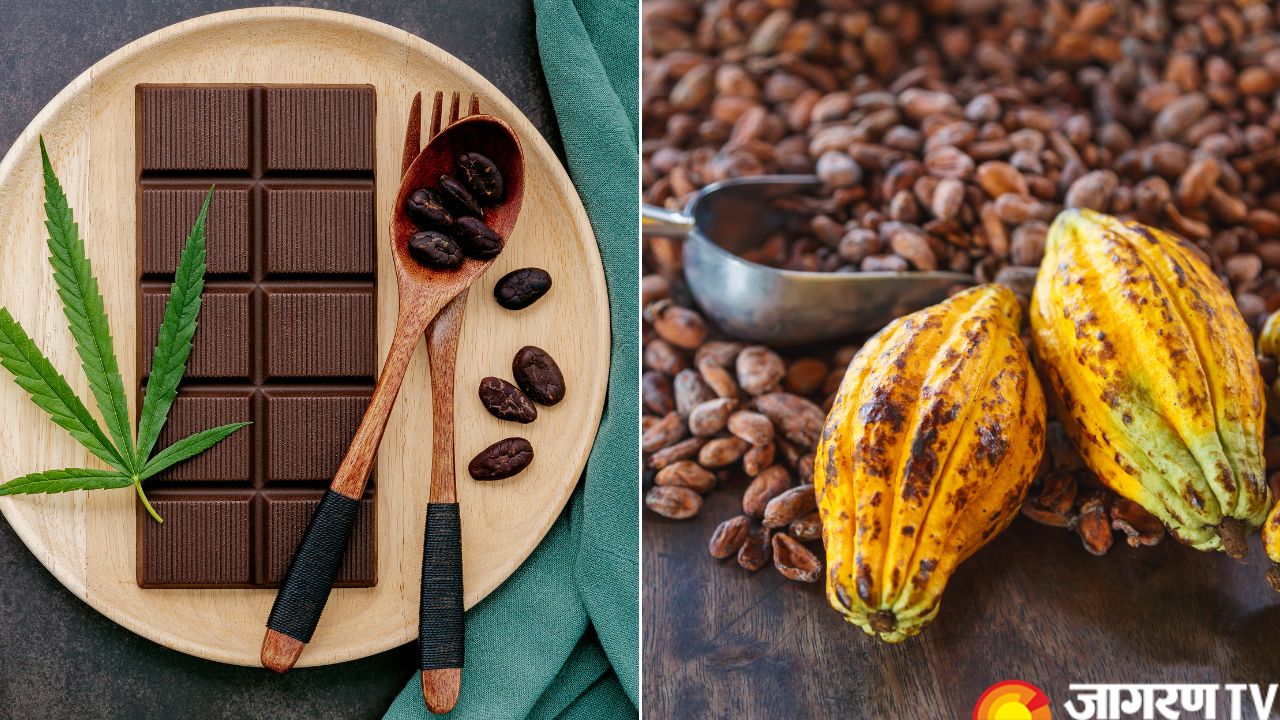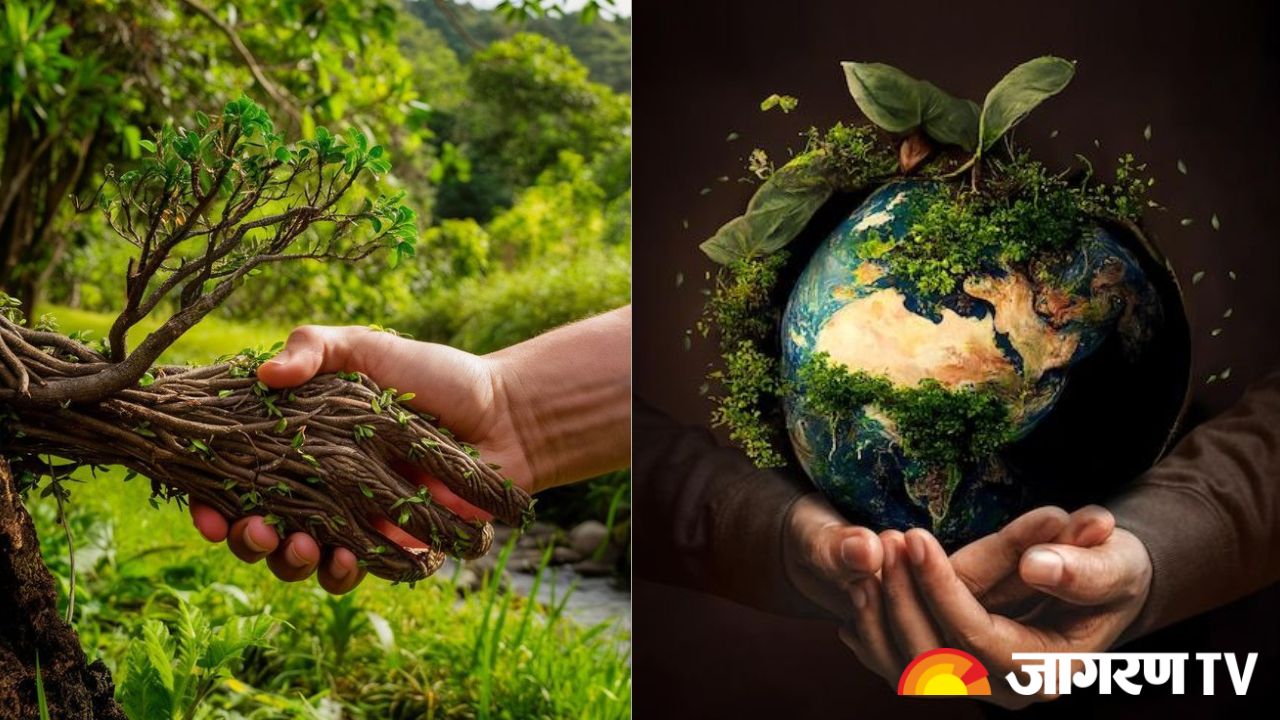World Chocolate Day 2025: Invention of First Edible Chocolate, Know the Process, Types, and More

World Chocolate Day 2025: Chocolate, a popular treat around the world, has a rich and complex history to match its flavour. Although cacao has been consumed for thousands of years, the first edible chocolate was invented relatively recently. The development of edible chocolate was a multifaceted process, based on millennia of cacao knowledge and accelerated by significant technological advances. From the cocoa press to the conching machine, each step turned chocolate from a specialised beverage to the beloved confection it is today, with a delectable range of flavours and textures to suit every taste.
Let us dive deeper into the invention of chocolate, types, and more.
Invention of Edible Chocolate
For millennia, ancient Mesoamerican civilisations such as the Maya and Aztecs drank cacao as a bitter, frothy beverage. These drinks, which were frequently spicy and unsweetened, were consumed in ceremonies and as a source of energy. When cacao first came in Europe in the 16th century, it was in liquid form, with additional sugar and spices to suit European tastes.
Conrad Van Houten, a Dutch chemist and chocolate manufacturer, is often credited with pioneering the development of solid, edible chocolates. In 1828, Van Houten invented the cacao press. This breakthrough machine could remove cocoa butter from roasted cocoa beans, resulting in a dry cocoa powder. This innovation was crucial for several reasons:
Improved Dissolvability
Cocoa powder dissolved more easily in liquids, resulting in a smoother beverage.
Reduced Fat Content
The powder became less oily after eliminating excess cocoa butter.
Foundation for Solid Chocolate
The extracted cocoa butter could then be precisely reintroduced into the cocoa powder, resulting in a mouldable paste that solidified into a bar.
While Van Houten established the framework, J.S. Fry & Sons is widely credited with creating the first fully solid, mass-produced chocolate bar in 1847. Using Van Houten’s method, they mixed cocoa powder, sugar, and cocoa butter to make a solid chocolate “eating chocolate.” This marked the beginning of the chocolate bar we know today.
Importance of Chocolate-Making Process
-
In 1879, Rodolphe Lindt invented the conching machine, which brought about more advances. Conching involves continuously mixing, stirring, and aerating liquid chocolate.
-
It degrades solid particles, leaving a considerably smoother, melt-in-your-mouth texture.
-
It aids in the evaporation of unwanted volatile acids, resulting in a smoother flavour and fuller overtones.
-
These innovations—the cocoa press and the conching machine—formed the foundation of the contemporary chocolate business, changing chocolate from a specialised beverage to a generally available confection.
Making Edible Chocolate
The journey from raw cacao beans to finished chocolate bars is complex, with several crucial phases.
Harvesting and Fermentation
Cacao pods are picked from the trees. The beans are covered in a white pulp and fermented for many days. This critical process creates the precursor flavours of chocolate and aids in the removal of pulp.
Drying
Following fermentation, the beans are often sun-dried to minimise moisture content and avoid mould.
Roasting
Roasting the dried beans enhances their flavour and aroma while also separating the outer shell from the nib.
Winnowing
The roasted beans are processed through a winnowing machine, which cracks them and separates the light, papery shells from the heavier cocoa nibs.
Grinding (Liquefaction)
The nibs are processed into a thick, paste-like substance known as chocolate liquor (or cocoa mass). Grinding generates heat, which melts the cocoa butter and gives it a fluid viscosity.
Pressing (for cocoa powder/butter separation)
If cocoa powder is needed, the chocolate liquor is pressed to separate the cocoa butter and cocoa solids, resulting in a solid 'press cake' that is subsequently crushed into cocoa powder.
Mixing
Chocolate liquid (or cocoa powder and cocoa butter), sugar, and, in some cases, milk powder (for milk chocolate) are mixed in exact proportions to make solid chocolate.
Refining
The mixture is passed through a series of rollers to minimise particle size and achieve a smoother texture.
Conching
This is the lengthy, continual mixing procedure mentioned earlier, which is critical for generating flavour and texture.
Tempering
The cocoa butter crystals are stabilised by carefully heating and cooling the chocolate at specified temperatures. This provides the finished chocolate with a smooth, glossy appearance, a pleasing snap, and eliminates "blooming" (a yellowish film that can form on the surface).
Molding and Cooling
The tempered chocolate is poured into moulds and allowed to cool until solidified into bars, truffles, or other shapes.
Packaging
The finished chocolate items are packaged and ready for distribution.
Types of Edible Chocolate
Innovations in chocolate processing paved the door for a wide diversity of chocolate kinds, each with its own distinct features.
Dark Chocolate
Characterised by a high cocoa solid content (usually 35% to 100%), less sugar, and no milk solids. Its flavour varies from very bitter to fruity and nuanced, depending on the bean's origin and cocoa percentage.
Milk Chocolate
Ingredients include cocoa solids, cocoa butter, sugar, and milk powder or condensed milk. In comparison to dark chocolate, the addition of milk results in a creamier texture and a sweeter, milder flavour. Daniel Peter and Henri Nestlé from Switzerland created it in 1875.
White Chocolate
White chocolate is unique in that it comprises cocoa butter, sugar, milk solids, and vanilla but not cocoa solids. This results in a creamy texture and a sweet, milky flavour without the typical bitterness of chocolate. Due to the lack of cocoa solids, some purists debate whether it should be classified as “chocolate.”
Semi-Sweet Chocolate
A type of dark chocolate with at least 35% cocoa solids and a moderate amount of sugar, making it ideal for baking.
Bittersweet Chocolate
Also a form of dark chocolate, it has a higher cocoa content than semi-sweet (typically 70% or higher) and less sugar, resulting in a more intense and less sweet flavour.
Couverture Chocolate
A high-quality chocolate with a high cocoa butter content (usually 32-39%) makes it particularly fluid when melted. With its outstanding snap and sheen, chocolatiers choose it for dipping, coating, and moulding.
Related Videos
यह भी पढ़ें
-
09 Apr, 2023
IPL 2023 : आज हैदराबाद और पंजाब में कौन मारेगा बाजी, ऐसी हो सकती है दोनों टीम की प्लेइंग इलेवन
-
09 Apr, 2023
कोरियन दूल्हे ने इंडियन स्टाइल में की शादी, घोड़ी भी चढ़ा और भांगड़ा भी किया, वीडियो हुआ वायरल
-
09 Apr, 2023
-
09 Apr, 2023
आकांक्षा दुबे मामले में आरोपी समर सिंह को भीड़ ने दौड़ाया, 14 दिन की न्यायिक हिरासत








